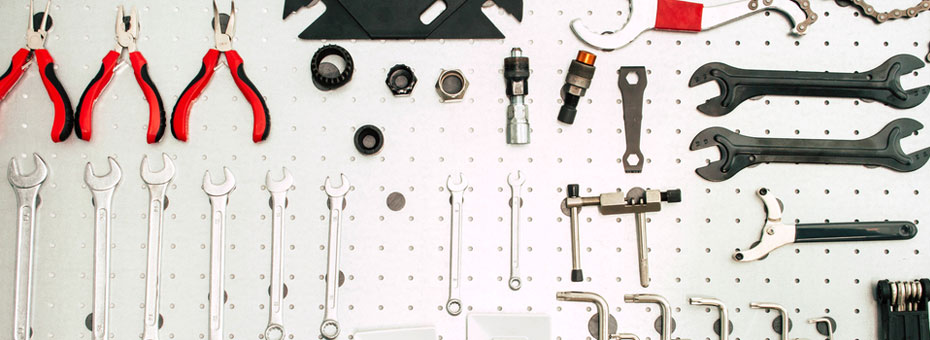Pick up almost any book on the topic of starting your lean journey and you’ll probably find the suggestion that the place to begin is implementing a 5S program. The reason for this is understandable. There are certain attitudes, mindsets, and habits that are required for employees to have if a company is to be successful in its lean implementation. The principle or tool of 5S is intended to help to develop those attitudes, mindsets, and habits. There’s no arguing that in order to be able to implement other tools such as TPM, visual management, and even kanban there needs to be good workplace organization, In addition, employees need to not just understand the concepts of standardized work and that everything has a place; but also make them a part of how they do their jobs daily.
So, I am not arguing with renowned and revered senseis who advocate 5S as a starting point because I get it. I get the fact that there is more to implementing 5S than just going in and throwing things away and laying down some lines on the floor or putting up shadow boards. The overarching lean principle of Respect for People also has to come into play. If that is missing, then starting with 5S can have disastrous results that may derail your efforts to implement any other tool or principle related to lean. A real life example will demonstrate what I mean. (Unfortunately, this example happens more than we may like to think.)
Company A
Company A decided that they needed to get on board the lean train. Their main customer was actively looking at implementing lean and their suppliers would be expected to follow suit. Having read the standard materials available about how to begin their lean journey, management decided to start with a 5S program. After all, 5S seemed relatively simple to put into place. All you needed was some peg board, hooks, and a black marker to draw outlines. What could be easier? And the books implied that the payback would be a change of mindset and habits of the employees in preparation for the next step on the journey.
So the peg board, hooks, and black markers were purchased and the shadow boards were prepared. When ready, they were taken to the production floor and hung up in various places. Of course this raised questions in the minds of the employees as to what the purpose of these boards was. Now was the opportunity for the manager to enlighten the employees and to take that first step in changing mindsets and habits. The conversation went something like this:
- Employee: What are those boards with the pictures of our tools for?
- Manager: Those are shadow boards. You are not going to be allowed to have tools at your workstations anymore. All your tools need to be put on that board when they aren’t being used.
- Employee: But we have our individual tools that have been issued to us. Can’t we still have those at our workstations?
- Manager: No, everything has to be kept on that shadow board. I guess you won’t be able to have your own tools anymore. You’ll have to share tools with the other employees.
- Employee: Well that doesn’t seem very sanitary. So do we have to put them on the board when we go to breaks and lunch?
- Manager: Whenever they are not in use they have to be on that board.
- Employee: You mean I have to walk all the way over there to get my tools? Why are they so far away from our workstations? And what if more of us need to use the broom or other tools at the same time? There’s only one on each board.
- Manager: They have to be centrally located so everyone can get to them. You’ll just have to learn to share.
After the manager walked away the conversation continued between employees. They weren’t buying into this new 5S idea. Instead they were plotting ways to make sure that they could keep their own tools. After all, it was stupid to have to walk so far to get what you needed.
Obviously there were multiple components missing from this 5S implementation. A couple of them are:
- Lack of understanding by management of how the 5S tool is supposed to be used in supporting lean processes. 5S is not an end in itself. This manager simply didn’t understand how 5S was supposed to work. He saw it as more of a control mechanism than a way to help employees be more efficient in their daily work.
- Lack of the Respect for People principle. Employees were not involved in this implementation of 5S. They were not asked where the tool boards should be placed, how many tools would be needed, or what should be on the board. Management assumed that they knew best what was needed. In addition, there was not any explanation of the “whys” behind 5S so the employees would understand the principle.
So, do you think there was a change in the attitudes, mindsets, and habits of the employees? Yes, definitely. A few of them are:
- An attitude of distrust of management grew. Obviously managers did not have the best interest of the employees in mind. They must have an ulterior motive for what they were doing because this was not helping the employees at all.
- The mindset was developed that management was going to be doing things TO the employees, not FOR or WITH them. The lack of worker involvement solidified this mindset which made moving forward with other parts of the lean difficult. This, together with the distrust factor, practically derailed this company’s lean journey for a couple of years.
- The habit of hiding things became prevalent. Hoarding of supplies and tools, putting tools in personal lockers, and hiding whatever the employee thought may be thrown out next became commonplace. Again, this is the result of the attitude and mindset above. And not only were items hidden, but employees were resistant to standardized work when standard operating procedures (SOPs) were introduced. When being watched they were compliant, but when management was not around, they did as they wanted. Can you guess whether employees were involved with writing SOPs?
After a couple of years of not being able to move forward much on their lean journey, this company decided to hire someone full time to implement lean. 5S was again emphasized, but in a different manner. Audits were conducted, but they were used not to penalize individuals or departments, but as opportunities to teach why 5S is important.
After approximately a year or so, 5S began to improve and became a part of the language and habits of employees. They even began to point things out in audits that needed to be worked on to improve areas. Although some were still skeptical, the habits of the employees did improve although an underlying attitude of distrust still remains in some. This has created a challenge during kaizen events, VSM creation, and standard work. This could have been minimized if 5S was better understood and implemented in the beginning.
Is 5S the way to start your lean journey? That depends on how it is implemented and sustained from the employees’ perspective.





